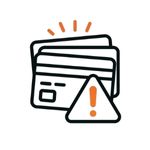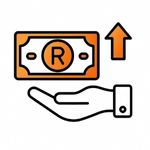
A credit limit might seem like a simple number on your statement, but it holds more power over your financial life than you might think. From shaping your credit score to determining how much you can borrow, it can open doors or quietly close them. But what really happens when you cross the line… or don’t use it at all?
Key Takeaways
- Credit Limit Definition: A credit limit is the maximum amount a lender allows you to borrow on a credit card or revolving facility, based on your income, credit history, and financial obligations.
- Impact on Credit Score: Keeping your credit utilisation below 30% of your total limit can support a stronger credit score and lower interest charges.
- Credit Limit Adjustments: Your limit may change over time based on your payment behaviour, income changes, or financial risk. Lenders may raise or reduce it depending on how responsibly you manage credit.
About Arcadia Finance
Easily secure a loan through Arcadia Finance with no application fees. Choose from 19 trusted lenders, all registered with South Africa’s National Credit Regulator. Enjoy a fast, transparent process designed to suit your financial needs.
What Is a Credit Limit?
A credit limit refers to the highest amount a financial institution permits a customer to borrow on a credit card or a revolving credit facility. The amount is usually determined by the lender after reviewing details about the applicant’s income, employment status, and overall financial position. This limit plays a significant role in influencing a person’s credit score, and it may also affect their eligibility for future credit applications.
How a Credit Limit Works
The credit limit represents the maximum amount you are allowed to spend on a specific credit card or revolving credit account. This ceiling is established by the lender, taking into account several factors such as your credit history, current income, and track record of repaying debts. Borrowers with strong credit profiles and consistent earnings are more likely to receive higher limits, as they are seen as carrying less risk.
Credit limits are relevant to both secured and unsecured forms of credit. In the case of secured credit, where an asset such as a vehicle or savings account is used as collateral, the lender also considers the collateral’s value, which can result in a higher borrowing limit.
Choosing the right card matters as much as knowing your limit. Discover the best credit cards in South Africa tailored to your spending habits, whether you’re after rewards, travel perks, or low interest rates. The right card can help you make the most of your credit limit.

Credit Limit vs. Available Credit
It is useful to understand the distinction between your credit limit and your available credit, particularly if you want to manage your credit card efficiently. The credit limit refers to the total amount your credit provider allows you to borrow on the card. In contrast, your available credit is the portion of that limit which remains unspent after deducting your current outstanding balance and any transactions still being processed.
Maintaining a higher level of available credit can be beneficial, as it contributes to a lower credit utilisation rate, which may positively influence your credit score. One practical approach to increasing your credit limit over time is by keeping your balance low and ensuring that you make all repayments on time. Demonstrating this kind of responsible behaviour may encourage your credit provider to approve a higher limit, based on your improved creditworthiness.
How Much Credit Can I Get?
When applying for a credit card, the lender will inform you of the maximum amount you may be allowed to borrow, referred to as your credit limit. This amount is not fixed for everyone and is determined after the provider assesses several factors. These typically include details from your application, information retrieved from your credit profile, and any existing data the provider may already have if you are an existing customer.
They will usually evaluate the following:
- Your borrowing history: This shows whether you’ve managed debt responsibly in the past, including any late or missed payments, or whether you’ve had no credit experience at all.
- Your disposable income: This refers to the money remaining after essential expenses such as rent, utility bills, and groceries have been paid.
- Your current financial obligations: Any debts you already have, including outstanding balances on loans, mortgages, overdrafts, or other credit cards, will be taken into account.
- Credit available to you elsewhere: If you already hold other cards, your existing credit limits will be considered to understand your total borrowing potential.
- The provider’s lending criteria: Every lender sets its own rules, and credit limits will differ depending on their internal policies and the type of card you’re applying for.
Changing Your Credit Limit
Your credit limit is not fixed permanently and may be adjusted over time based on various financial circumstances.
For instance, if you consistently pay your debts on schedule or avoid accumulating excessive credit elsewhere, this may support an increase in your credit limit. A rise in income or a reduction in your regular outgoings may also be taken into account when reviewing your eligibility.
You can request a change to your credit limit through your bank’s mobile application, internet banking platform, or by contacting the call centre. The same methods apply whether you are requesting an increase or a reduction.
You may opt to lower your limit voluntarily. Alternatively, your credit provider might do so if there are signs that you are not managing your credit account responsibly. Certain credit facilities, like temporary overdrafts, are structured with decreasing limits over time.
A history of missed payments can suggest that your finances are under pressure, which may prompt your credit provider to reconsider the amount of credit they are willing to offer.
Although credit limits are not frequently reduced, it remains a possibility. The primary concern for banks is whether the credit being offered is suitable for your financial position. If your financial situation changes significantly, it may not be advisable for the bank to maintain your current credit limit, and a decrease could be implemented.

Exceeding Your Credit Limit
When your credit usage goes beyond the authorised limit, your credit provider will usually require that the excess be repaid immediately, along with your usual minimum repayment.
This approach helps reduce the risk of clients becoming over-indebted or accumulating charges and interest that could worsen their financial position.
Major banks, such as FNB, make it easy for customers to monitor their credit balances via digital channels like the FNB app, internet banking, and ATMs. It’s advisable to monitor your spending and review your available credit regularly to avoid overspending.
By making payments towards your credit card, you restore available credit for future use. Paying off your full balance promptly not only avoids penalties but also ensures you have access to credit when needed. This can provide a financial cushion as you manage your repayments.
Understanding when your credit card is actually charged can help you better manage your credit limit and avoid surprises. Timing matters, especially when you’re close to hitting your limit or tracking spending.
What Is Credit Utilisation?
Credit utilisation refers to the portion of available revolving credit that you are currently using. It is calculated by dividing the amount of credit you’ve spent by your total credit limit. For example, if your credit card has a limit of R10 000 and you’ve spent R3 000, your utilisation rate is 30%.
This percentage can fluctuate depending on your spending and repayment habits. It applies mainly to revolving credit products, such as credit cards and store accounts, and does not relate to fixed instalment credit like vehicle finance or home loans.
Below is a practical guide on managing your credit utilisation rate more effectively.

Take a Measured Approach
Before applying for revolving credit, assess your financial position thoroughly. This means reviewing your income, fixed expenses, and any outstanding debts. Doing so allows you to choose a credit limit that matches what you can realistically manage. Opting for a lower limit can help reduce the chance of overextending yourself and building up debt that becomes difficult to repay.
Credit providers may offer to raise your credit limit after you’ve demonstrated responsible use over time. While the offer may seem helpful, it’s worth reviewing your financial situation again before agreeing. Increasing your limit without a clear repayment plan may increase your risk of overspending and financial strain.

Use Credit Responsibly
Using your entire credit limit can harm your credit profile, as it pushes your utilisation rate too high. A high utilisation rate often signals financial pressure and can reduce your credit score.
Most financial professionals recommend keeping your utilisation below 30% of your total credit facility. A lower usage rate not only helps your credit score remain steady but also limits the interest you accumulate, making your debt more manageable.

Pay More Than The Minimum Required
Making monthly repayments that exceed the minimum requirement comes with significant benefits. It brings your credit utilisation rate down, improves your credit rating, and reflects positively on your ability to manage debt responsibly.
Over time, this approach also reduces the amount of interest charged, helping you pay off your outstanding balance quicker and with less financial pressure.

Maintain And Improve Your Credit Score
Your credit score summarises your creditworthiness and can affect several aspects of your life. In South Africa, it is increasingly common for employers to consider credit history during hiring, as it can reflect how well a candidate handles responsibility.
Landlords and rental agents may also assess your score when reviewing rental applications. A low score might be seen as a risk. By monitoring and improving your score, you not only enhance your financial standing but may also access broader opportunities in employment and housing.
Some financial service providers, such as Sanlam, allow South Africans to check their credit score for free. Their tools also offer support from a credit management coach, help you monitor monthly repayments and account activity, keep track of interest charged, and alert you to unusual account behaviour. These services are intended to give you a clearer understanding of your overall financial position and support better financial decisions.
Conclusion
Understanding how credit limits function is essential for managing your finances and maintaining a healthy credit profile. The amount of credit available to you, how much of it you use, and how consistently you repay what you owe all play a role in influencing your credit score and access to future borrowing. Whether you’re applying for a new card or reviewing your existing credit, monitoring your usage, making repayments on time, and staying within a manageable limit can improve your financial reliability in the eyes of lenders and service providers alike.
Frequently Asked Questions
Your credit limit is determined by the lender after reviewing several factors, including your monthly income, existing financial obligations, credit history, and how reliably you’ve repaid debt in the past.
Yes, you may apply for a higher credit limit through your bank’s app, internet banking platform, or by contacting customer service. The bank will reassess your financial position before approving any changes.
If you spend more than your authorised limit, your provider will likely require immediate repayment of the excess. You may also face extra charges, and it could negatively affect your credit record.
Yes. Maintaining a low credit utilisation rate, preferably below 30% of your available limit, shows responsible credit use and can contribute positively to your overall credit score.
Although it doesn’t happen often, your lender can lower your credit limit if they detect financial distress or irregular account behaviour, such as missed repayments or excessive credit usage.
Fast, uncomplicated, and trustworthy loan comparisons
At Arcadia Finance, you can compare loan offers from multiple lenders with no obligation and free of charge. Get a clear overview of your options and choose the best deal for you.
Fill out our form today to easily compare interest rates from 19 banks and find the right loan for you.



